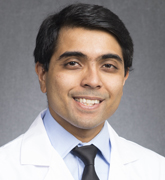Relapse and Disease-Free Survival in Patients With Myelodysplastic Syndrome Undergoing Allogeneic Hematopoietic Cell Transplantation Using Older Matched Sibling Donors vs Younger Matched Unrelated Donors. Journal Article
Local Library Link: Find It @ Loyola
| Authors: | Guru Murthy, GS; Kim, S; Hu, ZH; Estrada-Merly, N; Abid, MB; Aljurf, M; Bacher, U; Badawy, SM; Beitinjaneh, A; Bredeson, C; Cahn, JY; Cerny, J; Diaz Perez, MA; Farhadfar, N; Gale, RP; Ganguly, S; Gergis, U; Hildebrandt, GC; Grunwald, MR; Hashmi, S; Hossain, NM; Kalaycio, M; Kamble, RT; Kharfan-Dabaja, MA; Hamilton, BK; Lazarus, HM; Liesveld, J; Litzow, M; Marks, DI; Murthy, HS; Nathan, S; Nazha, A; Nishihori, T; Patel, SS; Pawarode, A; Rizzieri, D; Savani, B; Seo, S; Solh, M; Ustun, C; van der Poel, M; Verdonck, LF; Vij, R; Wirk, B; Oran, B; Nakamura, R; Scott, B; Saber, W |
| Article Title: | Relapse and Disease-Free Survival in Patients With Myelodysplastic Syndrome Undergoing Allogeneic Hematopoietic Cell Transplantation Using Older Matched Sibling Donors vs Younger Matched Unrelated Donors. |
| Abstract: | Importance: Matched sibling donors (MSDs) are preferred for allogeneic hematopoietic cell transplantation (allo-HCT) in myelodysplastic syndrome even if they are older. However, whether older MSDs or younger human leukocyte antigen-matched unrelated donors (MUDs) are associated with better outcomes remains unclear. Objective: To investigate whether allo-HCT for myelodysplastic syndrome using younger MUDs would be associated with improved disease-free survival and less relapse compared with older MSDs. Design, Setting, and Participants: This retrospective cohort study assessed data reported to the Center for International Blood and Marrow Transplant Research database from 1761 adults 50 years or older with myelodysplastic syndrome who underwent allo-HCT using an older MSD or younger MUD between January 1, 2011, and December 31, 2017, with a median follow-up of 48 months. Data analysis was performed from January 8, 2019, to December 30, 2020. Interventions/Exposures: Allo-HCT from an older MSD (donor age =50 years) or a younger MUD (donor age =35 years). Main Outcomes and Measures: The primary outcome was disease-free survival. Secondary outcomes were overall survival, relapse, nonrelapse mortality, acute graft-vs-host disease (GVHD), chronic GVHD, and GVHD-free relapse-free survival. Results: Of 1761 patients (1162 [66%] male; median [range] age, 64.9 [50.2-77.6] years in the MSD cohort and 66.5 [50.4-80.9] years in MUD cohort), 646 underwent allo-HCT with an older MSD and 1115 with a younger MUD. In multivariable analysis, the rate of disease-free survival was significantly lower in allo-HCTs with older MSDs compared with younger MUDs (hazard ratio [HR], 1.17; 95% CI, 1.02-1.34; P?=?.02), whereas the difference in overall survival rate of allo-HCT with younger MUDs vs older MSDs was not statistically significant (HR, 1.13; 95% CI, 0.98-1.29; P?=?.07). Allo-HCT with older MSDs was associated with significantly higher relapse (HR, 1.62; 95% CI, 1.32-1.97; P?.001), lower nonrelapse mortality (HR, 0.76; 95% CI, 0.59-0.96; P?=?.02), lower acute GVHD (HR, 0.52; 95% CI, 0.42-0.65; P?.001), chronic GVHD (HR, 0.77; 95% CI, 0.64-0.92; P?=?.005), and a lower rate of GVHD-free relapse-free survival beyond 12 months after allo-HCT (HR, 1.42; 95% CI, 1.02-1.98; P?=?.04). Conclusions and Relevance: This cohort study found higher disease-free survival and lower relapse for allo-HCT in myelodysplastic syndrome using younger MUDs compared with older MSDs. The risk of nonrelapse mortality and GVHD was lower with older MSDs. These results suggest that the use of younger MUDs should be considered in the donor selection algorithm for myelodysplastic syndrome, in which it is pivotal to minimize relapse given limited treatment options for managing relapsed disease. |
| Journal Title: | JAMA oncology |
| ISSN: | 2374-2445 |
| Publisher: | Unknown |
| Date Published: | 2022 |


